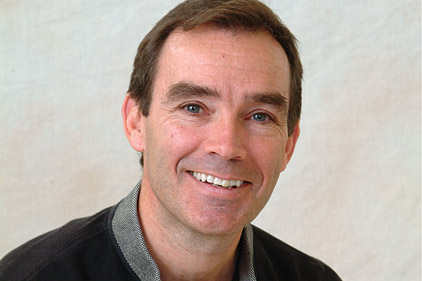 Ever feel like a professional presenter? You know, going into home after home, making a great presentation, watching beaming homeowners nod in agreement, and then they say, “Just leave your quote. We need to think about it.”
Ever feel like a professional presenter? You know, going into home after home, making a great presentation, watching beaming homeowners nod in agreement, and then they say, “Just leave your quote. We need to think about it.”
This is the point when you’d like to test a butane torch on their armpits. But since you’re a professional, you politely stand and decide to send them an anthrax love note instead. In truth, “thinking about it” is a stall. They couldn’t make a decision, and they now want to shop. And this does not always mean price shop. It means where the value of the offer is greater than the price. Big difference.
Psychology 101 of Selling
This value is mistakenly assumed to be the intrinsic value (equipment, hardware) which is on the logical level. Yet, logic is not what sells; emotion sells, and it sells for far more money, more often, and faster. When something sells because it’s cheap, that’s not really selling per se. And let’s be honest, cheap people are emotionally attached to cheapness (their personality) so even that wasn’t a logical choice.
You may be thinking, “Stop right there, smarty pants. My customers need HVAC, so there’s no emotion; this is a commodity.” Well, so are cars and watches, but all price elasticity that goes beyond transportation and telling time is purely driven by emotions.
With that point in your mind, you are ready to close more sales.
The Sequence
Since the average HVAC sales closing ratio is 32 percent, that leaves 68 percent who:
• Need to think about it;
• Don’t have the money; and
• Need to check around.
Those are the top three most dreaded answers in all of HVAC selling. Yes, they make me violent too, but let’s get over that. For all of those reasons (stalls, really), please understand that the vast majority do buy something, and may be using your bid as a negotiating tool or for comparison. So, you did the work; someone else gets paid.
Not fair? Many things aren’t. Even the score by knowing how to win on each level.
There are three parts of a sales visit: the presentation, the proposal, and the close. The presentation sets up the others and vastly improves your closing ratio, but it’s at the close that even great presenters get jittery.
Here’s how to boost your closing ratio: The presentation is when you gather the info you’ll need in order to close. This is generally done with a home energy survey. (Do not ever call it an estimate.) The answers to specific comfort and price questions then go to build the prospect’s new system. Add your home energy survey to your website and email campaigns, and allow homeowners to fill it out on their own time. This will give them the time needed to think about the answer and those who do fill it out are huge leads. Also, who doesn’t want to add an additional info capture to their site?
You’ll use trial closes at this point to gauge interest and a powerful presentation binder to allay fears and make comparisons to other products, even competitors. (Yes, I said competitors. This is the most effective way to overcome shopping and build your credibility.)
Your presentation includes an “upfront contract” which essentially states that “I’m fine with a yes or a no on today’s call,” just as long as you get a decision either way. This shortcuts the three aforementioned objections about 90 percent of the time. So, instead of saying, “we need to think about it,” this becomes closing questions for you at the end of your presentation. That alone will make a huge surge in closing percentage. It goes up even more when you effectively use…
The proposal. This is where you reframe the prospect’s exact answers and put them on your proposal form. Your form should read like a sales script and not some generic form that only you can follow. (Our sample was created this way for the customer and the presenter.)
Fill your proposal with guarantees, benefits, and comfort statements. You also want to show the prospect a “best, better, good” tiered pricing approach, with “best” clearly being a superior choice that outweighs benefits versus price. Then you go right into the close.
If you’ve done your presentation properly, you’ve eliminated the objections on “thinking about it,” “price is too high,” and “our system works fine.” The close becomes natural.
The return on investment close is one of my favorites. You simply state: “Mr. prospect, you’ve already seen that this new comfort system will solve your repair problems. In fact, our company will discount this system by the price of your last repair so that won’t be thrown away — plus, you won’t have another repair bill to worry about for five solid years. Your new system will also solve the comfort problems you’d mentioned in the home survey, so your enjoyment, satisfaction, and property value will all increase. But there’s something we haven’t discussed yet.
“The investment you’re making is paying you back. If my figures are correct (and you know they are), since we guarantee this system will cut your entire energy bill by 20 percent, it is actually paying you a return on investment of 6.2 percent in pure energy savings. And we guarantee it in writing. That’s better than any bank or investment — especially these days — and those won’t heat and cool your home.
“Since you know that each day you delay costs you more, and we have a system your size in stock, doesn’t it make sense to start saving now?”
This is just one type of closing method that top HVAC consultants recommend and there are many ways to close using logic and emotion, which is important. People buy because of emotional reasons, but you’re also giving them logic to support those reasons. A perfectly crafted sales close does both.
Advanced Sales Closing
Go ahead and comparison shop the competition to put together a “Shopper’s Guide” for your area. (Doing this is a little work, but it’ll save you hundreds of hours of wasted call-back time and improve your closing ratio. Some software can do this instantly.) This will show comparative guarantees, energy savings, and how the benefits of your system exceed these. (They’d better!) Further, you are showing “sales transparency” which boosts your credibility and emotional bond. People buy from people who are clearly honest and whom they like. This is a way to become both.
I encourage you to review your closing process right now. Take a look at how each part relates to what you’ve just learned. Tweak it, make it more interesting, cut out the waste, and include the answers to stalls that are most often presented.
If you adopt just three changes in your methods, you will close more sales for a more profitable summer. After you close, don’t forget to follow up and make sure everything is still OK. This shows the customer you care and will help generate more reviews, testimonials, and referrals.
Publication date: 7/15/2013
Want more HVAC industry news and information? Join The NEWS on Facebook, Twitter, and LinkedIn today!



Report Abusive Comment